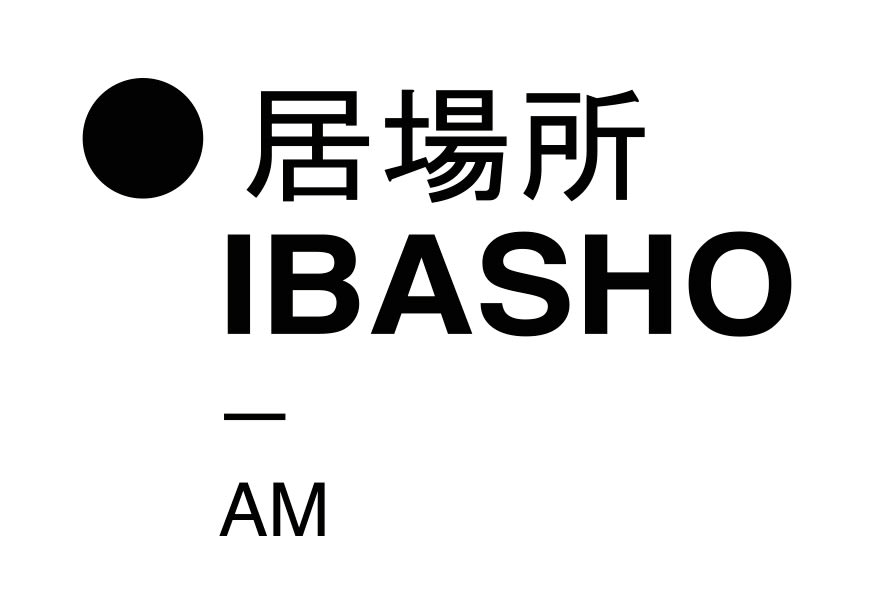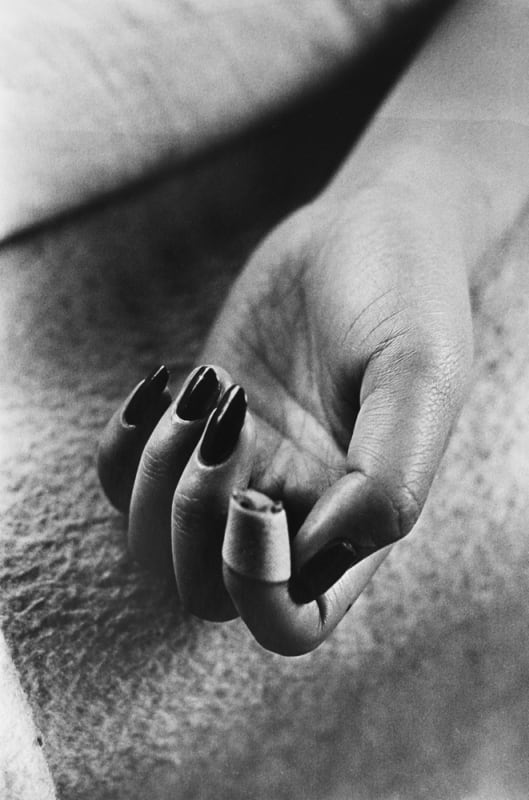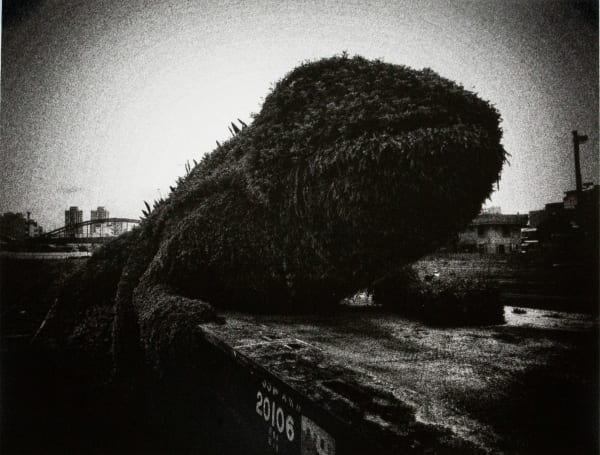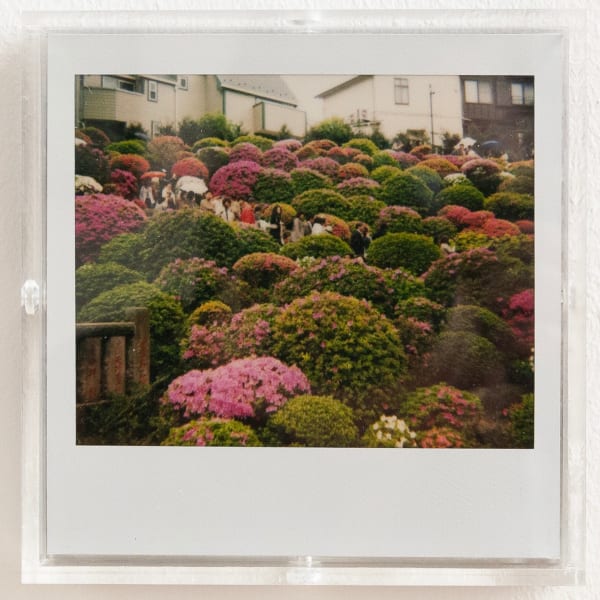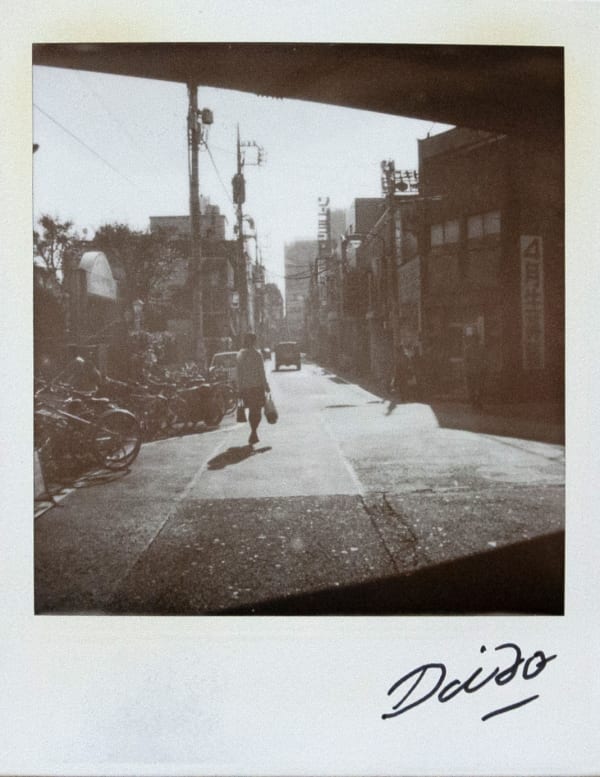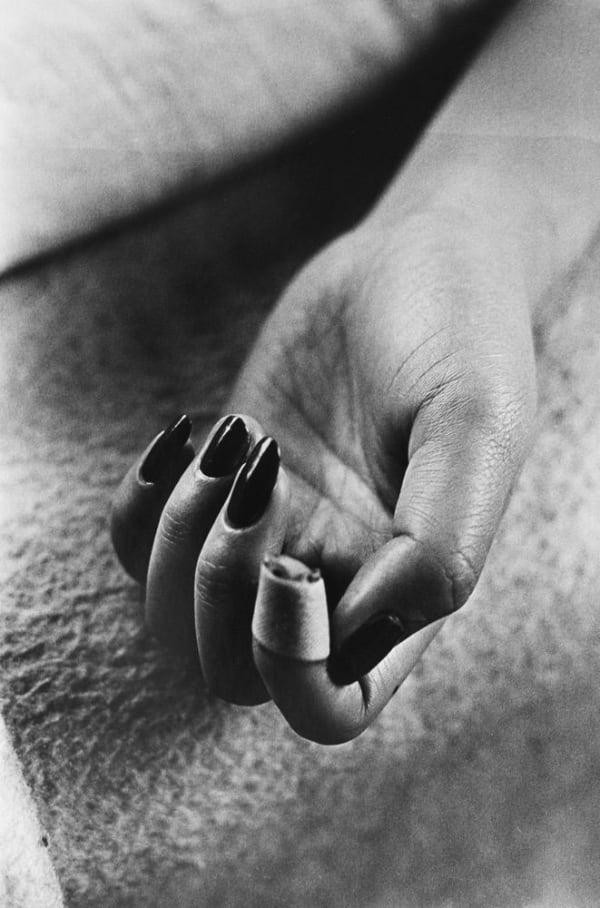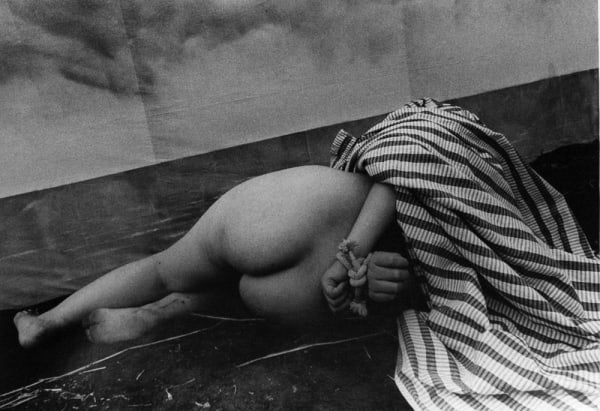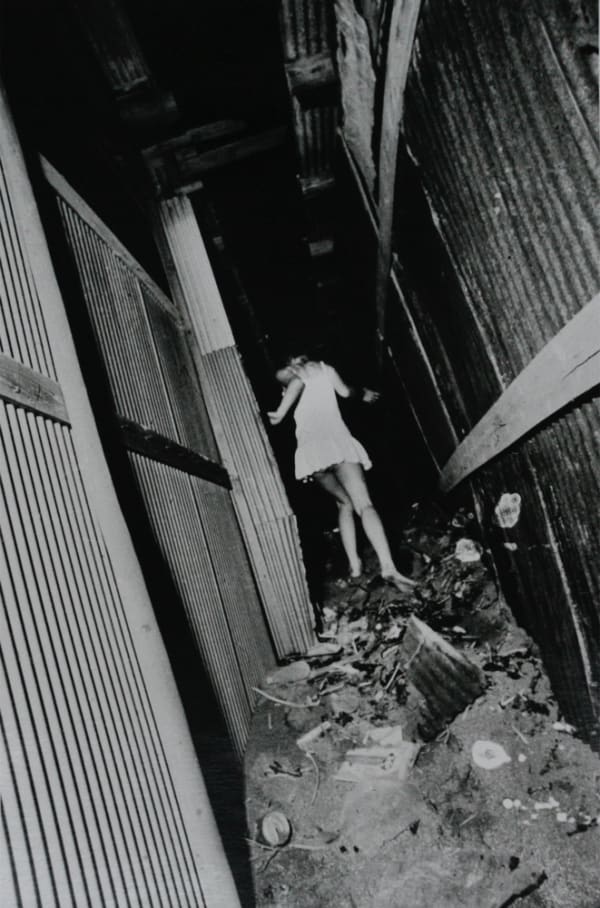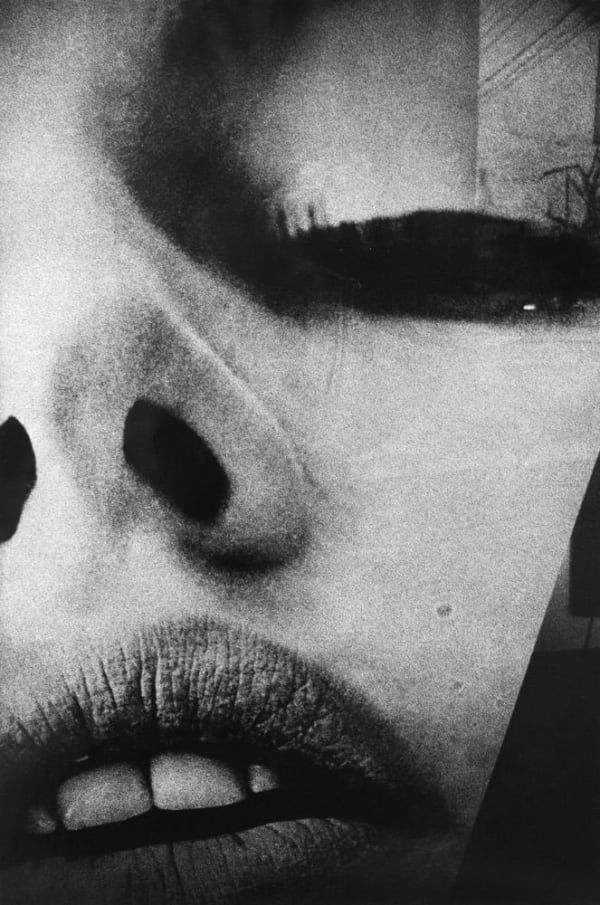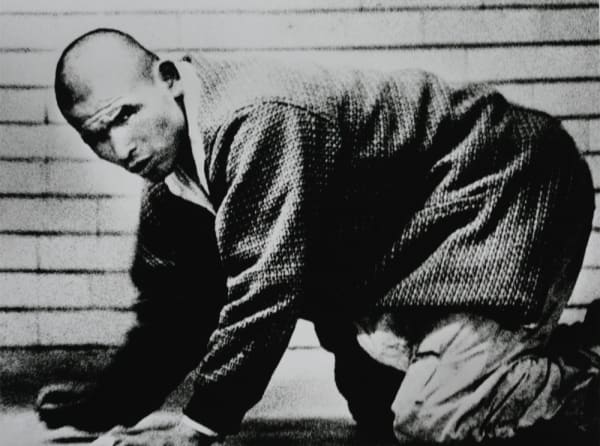Daido Moriyama
Aside from apprenticeships to Takeji Iwamiya and Eikoh Hosoe, Osaka-born Daido Moriyama (b. 1938) is essentially self-taught and did not pursue formal training in photography. He became a freelance photographer in 1963. While apprenticing with Hosoe, Moriyama assisted in the production of Ordeal by Roses, a photo-essay of the novelist Yukio Mishima. It was also in this period that Moriyama’s work began to appear in photography magazines, including Camera Mainichi and Asahi Camera.
Disregarding the well-entrenched photographic conventions of reproduction, documentation and clear communication, Moriyama embraced the hand-held camera and high-contrast black-and-white film and took to the streets, indifferent to technical and compositional customs and niceties. He purposely sought to blur, scratch and mis-expose, leading critics to inveigh against his “are, bure, boke, konpura” (rough, blurred, out-of-focus, contemporary) approach. This upending of convention caused a stir in the late sixties when Japan was embroiled in student riots, precipitated in part by opposition to the renewal of the security treaty between Japan and the US. Regarding his work in the 1960s and 1970s Moriyama has acknowledged the influence of William Klein for the use of instantaneous conditions and natural light and of Andy Warhol for the use of repetition and the use of the silk screen technique.
A year after he received the 1967 new-artist award from the Japan Photo Critics Association, Moriyama joined a progressive photography collective that published the famous magazine Provoke, which criticised entrenched conventions of photographic expression. The magazine ceased publication and after three quarterly issues the collective disbanded in 1970. However, out of this Provoke-period came Shashin yo Sayonara, Moriyama’s photo book from 1972 that can be considered as one of the most extreme photo books ever published. Moriyama has stated that ‘I wanted to go to the end of photography’ and the book can be read as a summation of the Provoke period. Next to Shashin yo Sayonara (Bye Bye Photography; 1972), Moriyama has published many other books and magazines of which Nippon Geiko Shashin-cho (Japanese Theatre; 1968) and Kariudo (Hunter; 1972) are also widely known.
As of the 1970s Moriyama has not only exhibited frequently within Japan but also participated in several major exhibitions abroad: starting with New Japanese Photography at MoMA in New York (1974). His most recent major international exhibition was the duo-exhibition in Tate Modern, London with William Klein (2012).
-
 Record No. 28, 2015
Record No. 28, 2015 -
 Bye bye polaroid, 2008
Bye bye polaroid, 2008 -
 Bye bye Polaroid, 2008
Bye bye Polaroid, 2008 -
 Bye bye Polaroid, 2008
Bye bye Polaroid, 2008 -
 Bye bye Polaroid, 2008
Bye bye Polaroid, 2008 -
 Bye bye Polaroid, 2008
Bye bye Polaroid, 2008 -
 Bye bye Polaroid, 2008
Bye bye Polaroid, 2008 -
 From Record No. 6, 2006
From Record No. 6, 2006 -
 Untitled, from Passage, 1998-1999
Untitled, from Passage, 1998-1999 -
 Untitled, from Passage, 1998-1999
Untitled, from Passage, 1998-1999 -
 Untitled, from Passage, 1998-1999
Untitled, from Passage, 1998-1999 -
 Untitled, from Passage, 1998-1999
Untitled, from Passage, 1998-1999 -
 Untitled, from Passage, 1998-1999
Untitled, from Passage, 1998-1999 -
 Untitled, from Passage, 1998-1999
Untitled, from Passage, 1998-1999 -
 Untitled, from Passage, 1998-1999
Untitled, from Passage, 1998-1999 -
 Untitled, from Passage, 1998-1999
Untitled, from Passage, 1998-1999 -
 Untitled, from Passage, 1998-1999
Untitled, from Passage, 1998-1999 -
 Untitled, from Passage, 1998-1999
Untitled, from Passage, 1998-1999 -
 Untitled, from Passage, 1998-1999
Untitled, from Passage, 1998-1999 -
 Untitled, from Passage, 1998-1999
Untitled, from Passage, 1998-1999 -
 Untitled, from Passage, 1998-1999
Untitled, from Passage, 1998-1999 -
 Untitled, from Passage, 1998-1999
Untitled, from Passage, 1998-1999 -
 Untitled, from Passage, 1998-1999
Untitled, from Passage, 1998-1999 -
 Untitled, from Passage, 1998-1999
Untitled, from Passage, 1998-1999 -
 Untitled, from Passage, 1998-1999
Untitled, from Passage, 1998-1999 -
 Untitled, from Passage, 1998-1999
Untitled, from Passage, 1998-1999 -
 Untitled, from Passage, 1998-1999
Untitled, from Passage, 1998-1999 -
 Untitled, from Passage, 1998-1999
Untitled, from Passage, 1998-1999 -
 Untitled, from Passage, 1998-1999
Untitled, from Passage, 1998-1999 -
 Untitled from Passage, 1998-1999
Untitled from Passage, 1998-1999 -
 Untitled from Passage, 1998-1999
Untitled from Passage, 1998-1999 -
 Untitled from Passage, 1998-1999
Untitled from Passage, 1998-1999 -
 Untitled from Passage, 1998-1999
Untitled from Passage, 1998-1999 -
 from "Lettre à St. Loup", 1990
from "Lettre à St. Loup", 1990 -
 A tale of II Cities 4, Paris, 1989
A tale of II Cities 4, Paris, 1989 -
 How to Create a Beautiful Picture 6: Tights in Shimotakaido, 1987
How to Create a Beautiful Picture 6: Tights in Shimotakaido, 1987 -
 Bandaged Finger, 1987
Bandaged Finger, 1987 -
 A Boy / "Memory of Dog", 1982
A Boy / "Memory of Dog", 1982 -
 Cherry Blossoms, 1975
Cherry Blossoms, 1975 -
 Provoke (Mayfly), 1972
Provoke (Mayfly), 1972 -
 from "Hunter ", 1972
from "Hunter ", 1972 -
 Yokosuka from "Another Country 18", 1971
Yokosuka from "Another Country 18", 1971 -
 Tomei Expressway: The Road that Drives People, 1969
Tomei Expressway: The Road that Drives People, 1969 -
 Eros, from Provoke 2, 1969
Eros, from Provoke 2, 1969 -
 Eros or Something other than Eros, 1969
Eros or Something other than Eros, 1969 -
 Japan, a photo theater, 1968
Japan, a photo theater, 1968 -
 Record no. 26
Record no. 26
-

À la carte - Daido Moriyama
Moriyama, Daido, 2016softcover, 44 pagesRead more
Publisher: Akio Nagasawa Publishing
Dimensions: 300 x 215 mm -

A retrospective - Daido Moriyama
Exhibition catalogue Daido Moriyama, 2023hard cover, 288 pagesRead more
Publisher: Prestel Publishing, 2023
Dimensions: 210 x 255 mm -

BUENOS AIRES (Special Edition) - Daido Moriyama
Daido Moriyama, 2005hardcover with dust jacket, 294 pagesRead more
Publisher: Kodansha
Dimensions: 295 x 215 mm -

CURIOUS EYES FOR MAN - Through the Eyes of 31 Photographers
人間への好奇心 Yamagami, Shojisoftcover, 32 pagesRead more
Publisher: Shoji Yamagami
Dimensions: 210 x 150 mm
-

Inu no Toki - Daido Moriyama
The time of the dog Daido Moriyama, 1995hardcover with dust jacket and obi, 350 pagesRead more
Publisher: Sakuhinsha
Dimensions: 263 x 180 mm -
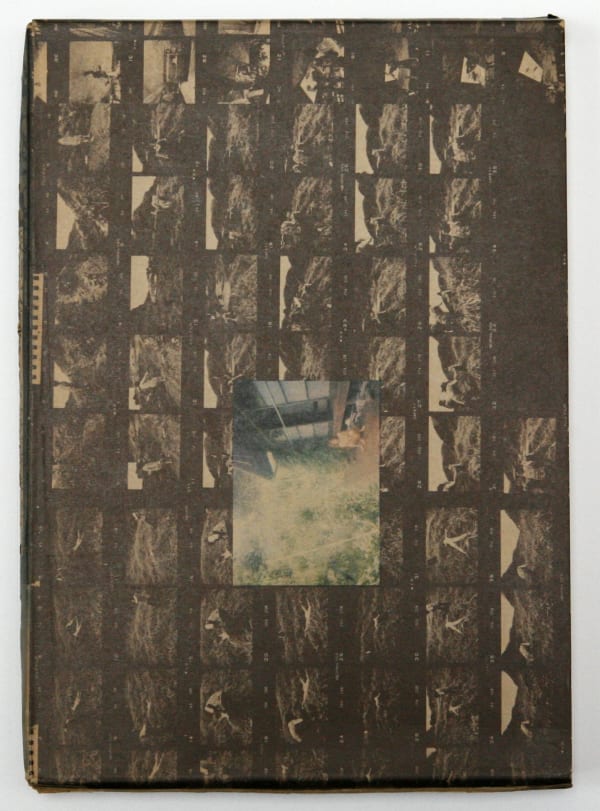
Kagerou - Daido Moriyama
Mayfly Daido Moriyama, 1972softcover, slip case, 190 pagesRead more
Publisher: Haga Shoten
Dimensions: 262 x 225 mm -

Kuchibiru - Daido Moriyama
Daido Moriyama, 2006hardcover, 16 pagesRead more
Publisher: Nazraeli Press
Dimensions: 187 x 145 mm -

Looking Back: 10 Years of IBASHO
Exhibition catalogue various artist, 2025softcoverRead more
Publisher: IBASHO
Dimensions: 230 x 240 mm
-

Memories Of A Dog, Deluxe Edition With Print
Daido Moriyama Daido Moriyama, 2004hardcover with dust jacket in a clothed box, 192 pagesRead more
Publisher: Nazraeli Press
ISBN: 1-59005-067-3
Dimensions: 252 x 183 mm -

MORIYAMA Daido 1970-1979 - Daido Moriyama
Daido Moriyama, 1989hardcover with dust jacket, 84 pagesRead more
Publisher: Sohkyu-Sha
Dimensions: 230 x 260 mm -

Moriyama Daido Color 2 - Daido Moriyama
Daido Moriyama, 1999hardcover in slipcase, 84 pagesRead more
Publisher: Sokyu-sha
Dimensions: 230 x 255 mm -

New Japanese photography
Various artists, 1974softcover, 120 pagesRead more
Publisher: The Museum of Modern Art
Dimensions: 253 x 230 mm
-

Provoke 2
Koji Taki, Takuma Nakahira, Takahiko Okada, Yutaka Takanashi, Daido Moriyama , 1969softcover, 110 pagesRead more
Publisher: Provoke-sha
Dimensions: 245 x 180 mm -
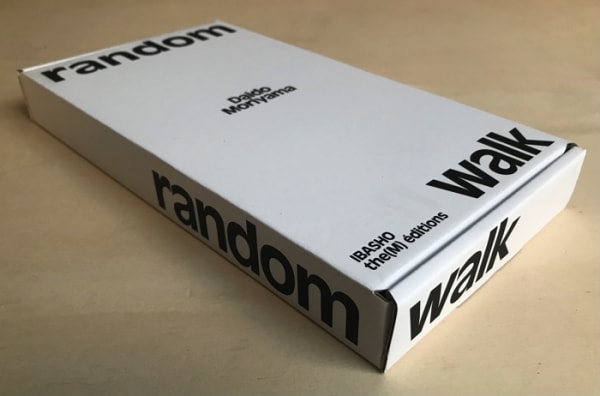
RANDOM WALK - Daido Moriyama
Moriyama, Daido, 2021hardcover in cardboard box, 64 pages, 62 B&W Polaroid stickers, 38 Colour Polaroid stickers pagesRead more
Publisher: IBASHO & the (M)éditions
Dimensions: 120 x 240 mm -

Record No.1-5 (Reprint Edition) - Daido Moriyama
Daido Moriyama, 2008softcover in special boxRead more
Publisher: Akio Nagasawa Publishing
Dimensions: 310 x 230 mm -

Record No.14 - Daido Moriyama
Moriyama, Daido, 2010softcover, 48 pagesRead more
Publisher: Akio Nagasawa Publishing
Dimensions: 278 x 220 mm
-

Record No.16 - Daido Moriyama
Moriyama, Daido, 2010softcover, 48 pagesRead more
Publisher: Akio Nagasawa Publishing
Dimensions: 278 x 220 mm -

Record No.18 - Daido Moriyama
Moriyama, Daido, 2011softcover, 48 pagesRead more
Publisher: Akio Nagasawa Publishing
Dimensions: 278 x 220 mm -

Record No.19 - Daido Moriyama
Moriyama, Daido, 2011softcover, 72 pagesRead more
Publisher: Akio Nagasawa Publishing
Dimensions: 278 x 220 mm -

Record No.22 - Daido Moriyama
Moriyama, Daido, 2012softcover, 80 pagesRead more
Publisher: Akio Nagasawa Publishing
Dimensions: 278 x 220 mm
-

Record No.23 - Daido Moriyama
Moriyama, Daido, 2013softcover, 160 pagesRead more
Publisher: Akio Nagasawa Publishing
Dimensions: 278 x 220 mm -

Record No.25 - Daido Moriyama
Moriyama, Daido, 2014softcover, 144 pagesRead more
Publisher: Akio Nagasawa Publishing
Dimensions: 278 x 220 mm -

Record No.27 - Daido Moriyama
Moriyama, Daido, 2014softcover, 90 pagesRead more
Publisher: Akio Nagasawa Publishing
Dimensions: 278 x 220 mm -

Record No.32 - Daido Moriyama
Moriyama, Daido, 2016softcover, 160 pagesRead more
Publisher: Akio Nagasawa Publishing
Dimensions: 278 x 220 mm
-

Record No.33 - Daido Moriyama
Moriyama, Daido, 2016softcover, 88 pagesRead more
Publisher: Akio Nagasawa Publishing
Dimensions: 278 x 220 mm -

Record No.34 - Daido Moriyama
Moriyama, Daido, 2017softcover, 112 pagesRead more
Publisher: Akio Nagasawa Publishing
Dimensions: 278 x 220 mm -

Record No.35 - Daido Moriyama
Moriyama, Daido, 2017softcover, 124 pagesRead more
Publisher: Akio Nagasawa Publishing
Dimensions: 278 x 220 mm -

Record No.36 - Daido Moriyama
Moriyama, Daido, 2017softcover, 114 pagesRead more
Publisher: Akio Nagasawa Publishing
Dimensions: 278 x 220 mm
-

Record No.37 - Daido Moriyama
Moriyama, Daido, 2018softcover, 122 pagesRead more
Publisher: Akio Nagasawa Publishing
Dimensions: 278 x 220 mm -

Record No.38 - Daido Moriyama
Moriyama, Daido, 2018softcover, 120 pagesRead more
Publisher: Akio Nagasawa Publishing
Dimensions: 278 x 220 mm -

Record No.39 - Daido Moriyama
Moriyama, Daido, 2018magazine, 120 pagesRead more
Publisher: Akio Nagasawa Publishing
Dimensions: 280 x 210 mm -

Record No.40 - Daido Moriyama
Moriyama, Daido, 2019softcover, 112 pagesRead more
Publisher: Akio Nagasawa Publishing
Dimensions: 280 × 210 mm
-

Record No.41 - Daido Moriyama
Moriyama, Daido, 2019softcover, 104 pagesRead more
Publisher: Akio Nagasawa Publishing
Dimensions: 280 × 210 mm -

Record No.42 - Daido Moriyama
Daido Moriyama, 2019softcover, 48 pagesRead more
Publisher: Akio Nagasawa Publishing
Dimensions: 280 × 210 mm -

Record No.43 - Daido Moriyama
Moriyama, Daido, 2020softcover, 120 pagesRead more
Publisher: Akio Nagasawa Publishing
Dimensions: 280 × 210 mm -

Record No.44 - Daido Moriyama
Moriyama, Daido, 2020softcover, 128 pagesRead more
Publisher: Akio Nagasawa Publishing
Dimensions: 280 × 210 mm
-

Record No.45 - Daido Moriyama
Moriyama, Daido, 2020softcover, 112 pagesRead more
Publisher: Akio Nagasawa Publishing
Dimensions: 280 × 210 mm -

Record No.48 - Daido Moriyama
Moriyama, Daido, 2021softcover, 136 pagesRead more
Publisher: Akio Nagasawa Publishing
Dimensions: 280 × 210 mm -

Record No.51 - Daido Moriyama
Moriyama, Daido, 2022softcover, 104 pagesRead more
Publisher: Akio Nagasawa Publishing
Dimensions: 280 × 210 mm -
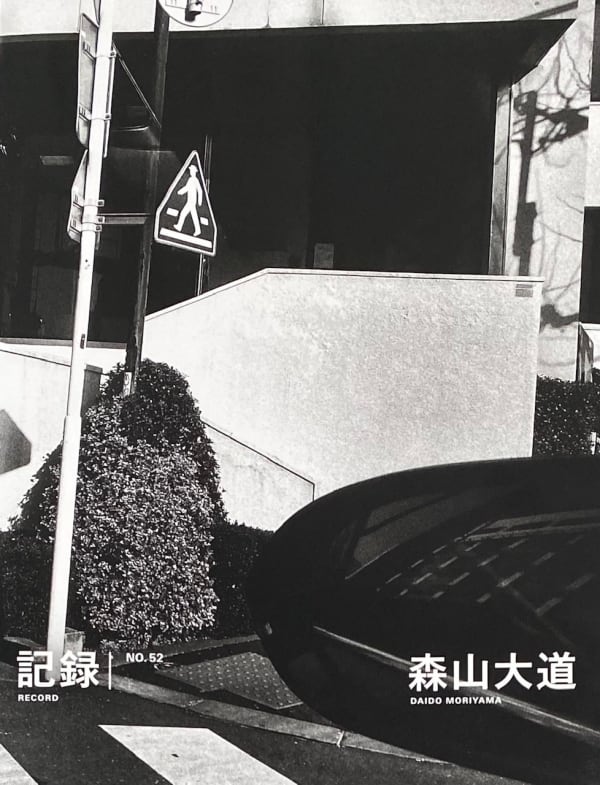
Record no.52 - Daido Moriyama
Daido Moriyama, 2022softcover, 120 pagesRead more
Publisher: Akio Nagasawa
Dimensions: 210 x 280 mm
-

RECORD No.58 - Daido Moriyama
Moriyama, Daido, 2024softcover, 104 pagesRead more
Publisher: Akio Nagasawa Publishing
Dimensions: 280 × 210 mm -

Record No.9 - Daido Moriyama
Daido Moriyama, 2008softcover, 48 pagesRead more
Publisher: Akio Nagasawa Publishing
Dimensions: 278 x 220 mm -

Shashin yo Sayonara - Daido Moriyama, Takuma Nakahira
Daido Moriyama, Takuma Nakahira, 1972softcover with dust jacket, 308 pagesRead more
Publisher: Shashin Hyoron Sha
Dimensions: 230 x 185 mm -

Tokyo Revisited - Daido Moriyama and Shomei Tomatsu
Set of three books Daido Moriyama, Shomei Tomatsu, 2022softcover in slipcaseRead more
Publisher: Akio Nagasawa Publishing
Dimensions: 260 × 183 x 30 mm
-

#70 Looking back: 10 Years of IBASHO
23 Mar - 18 May 2025We're excited to celebrate a big milestone at IBASHO: 10 years of sharing the beauty of Japanese photography. To mark this special moment, we're hosting a group exhibition “Looking Back:...Read more -

#59 Yōjo - Jeremy Stigter & the IBASHO Collection
3 Jun - 6 Aug 2023IBASHO is delighted to announce the opening of “Yōjo”, an exhibition developed in close collaboration with the Dutch photographer Jeremy Stigter. “Yōjo”, a Japanese concept that can be translated as...Read more -

#53 Toshi-City
Summer group exhibition 25 Jun - 28 Aug 2022For the 2022 Summer group exhibition IBASHO has chosen the city ('Toshi' in Japanese) as a theme. Who thinks of Japanese cities, thinks of Tokyo first. This hypermodern city in...Read more -

#49 - IBASHO & the (M)éditions present 'The Photo Book as Object'
20 Nov 2021 - 9 Jan 2022After the successful launch of 6 newest publications at Paris Photo 2021, IBASHO & the (M)éditions are proud to present the exhibition 'The Photo Book as Object' in IBASHO's gallery...Read more
-

#04 Summer Exhibition 2015
2 Jul - 30 Aug 2015After the first three months of the opening of IBASHO we are going to enjoy the Summer and will not have regular opening hours, but we will still open our...Read more -

#01 SHASHIN YO KONNICHIWA (HELLO TO PHOTOGRAPHY)
26 Mar - 30 Apr 2015Shashin yo Sayonara (Bye-bye to Photography) is the title of Daido Moriyama's groundbreaking photo book, in which the master of Japanese contemporary photography breaks out of the boundaries of conventional...Read more
